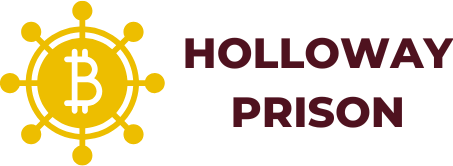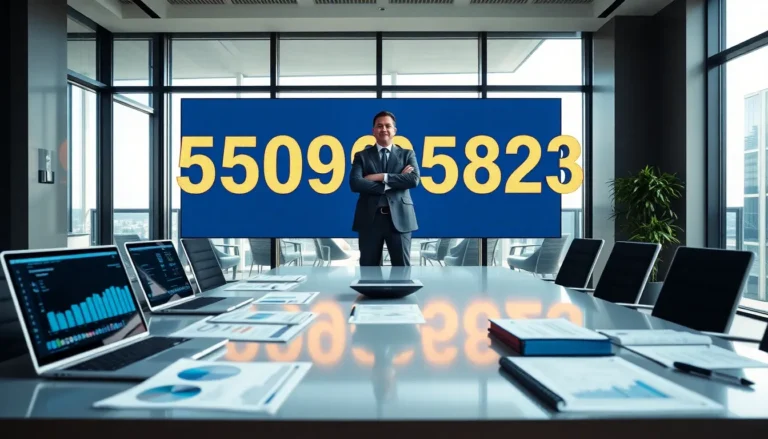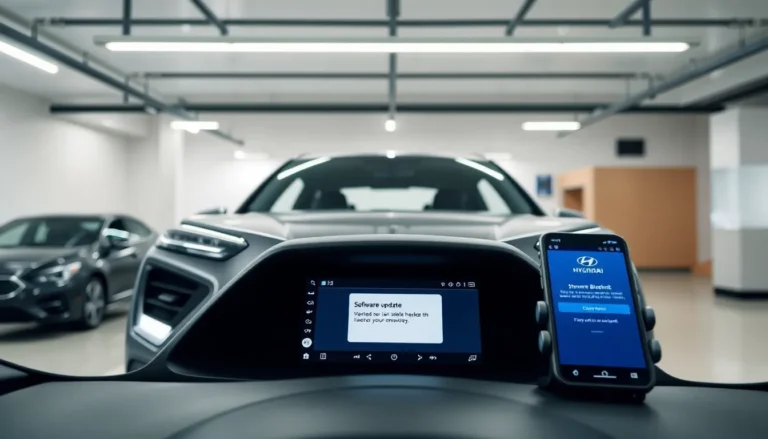Imagine walking into a restaurant where every table is perfectly managed, servers glide through the crowd with ease, and customers are seated without a hint of chaos. Sounds like a dream? Well, that’s the reality thanks to restaurant table management software. This innovative tech marvel does more than just show you where to sit your guests: it transforms how restaurants operate, making them more efficient than ever. If you’ve ever found yourself waiting for a table on a busy Friday night, you know the importance of effective table management. Immerse and discover how this software can change the game for restaurateurs everywhere.
Table of Contents
ToggleUnderstanding Restaurant Table Management Software

Restaurant table management software is a digital tool designed to optimize the seating process in dining establishments. At its core, it helps with the allocation of tables based on various factors such as party size, reservations, and availability. This software empowers managers to streamline operations by allowing them to visualize the restaurant layout clearly.
Think of it as a game of Tetris for tables. Instead of trying to fit people into whatever spots are available, the software organizes seating in a way that maximizes guest satisfaction and restaurant efficiency. With real-time updates on table status and occupancy, restaurant staff can respond swiftly to changing situations. It’s like having a virtual host at the front welcoming guests into a perfectly balanced and bustling atmosphere.
Key Features of Table Management Software
When evaluating restaurant table management software, certain features stand out as essential. These components not only improve operational flow but also enhance the overall customer experience.
Real-Time Table Status
Managers can view which tables are occupied, reserved, or available at a glance. This feature eliminates the guesswork, allowing hosts to seat customers promptly and appropriately.
Reservations and Waitlists Management
Software solutions often come equipped with features for managing reservations and waitlists. Customers can book tables in advance, leading to less wait time and better planning for both staff and guests.
Floor Plan Customization
Being able to customize floor plans is crucial. Restaurants have unique layouts, and software should adapt to various configurations. Visualizing how tables are set up can allow managers to optimize each meal service.
Reporting and Analytics
Data doesn’t just reside in fancy spreadsheets. Many table management systems incorporate analytics that help restaurant owners examine peak times, table turnover rates, and overall performance, information crucial for making strategic adjustments.
Benefits of Using Table Management Software
Utilizing table management software brings a myriad of benefits to restaurants looking for seamless operations.
Improved Efficiency
Guests are seated faster, and orders are taken more quickly with proper management of space. This efficiency leads to more tables being turned over, so increasing revenue.
Enhanced Customer Experience
A well-managed dining experience means waiting times decrease, leading to happier customers. Engaged diners are more likely to return, so fostering a great experience is key.
Better Communication Among Staff
When everyone uses the same software, communication becomes smoother. Team members can easily access current table statuses and needs without confusion, leading to a more connected work environment.
Choosing the Right Table Management Software
With numerous options on the market, selecting the right table management software can feel overwhelming. But, potential users should focus on a few key aspects:
Compatibility with Existing Systems
Ensure the software integrates well with your current point-of-sale (POS) systems and other restaurant technology. A poor integration can create more headaches than solutions.
Scalability
Choosing software that can grow with your business is important. Whether you’re a small café or a large fine dining establishment, select a solution that can adapt as your needs change.
User Experience
An intuitive interface is vital to ensuring staff can adopt the software with minimal training. Look for programs that prioritize user-friendliness.
Case Studies: Success Stories with Table Management Software
Numerous restaurants have experienced remarkable transformations after implementing table management software:
Example 1: A Local Bistro
A small bistro in Chicago doubled its customer turnover after utilizing a state-of-the-art table management system. This allowed staff to focus less on tracking table assignments and more on customer service, leading to rave reviews and repeat business.
Example 2: A High-End Restaurant
Another venue, known for long waits, found its efficiency skyrocketing. By incorporating seating apps that managed reservations and walk-ins, diners now enjoy a smoother experience and are more likely to make reservations instead of drifting away due to long wait times.
Future Trends in Restaurant Table Management
The landscape of table management software is continuously evolving. Some future trends to keep an eye on include:
Artificial Intelligence Integration
As AI becomes more prevalent, we can expect systems to predict seating trends based on historical data. This could allow restaurants to forecast busy times better and adjust staffing accordingly.
Mobile Accessibility
Mobile-friendly management tools are becoming essential as more restaurant owners wish to manage their establishments on the go. Expect to see more apps that allow full features directly from smartphones.
Enhanced Customer Interfaces
With the rise of tech-savvy diners, many restaurants are likely to offer interfaces where customers can check wait times and make reservations themselves, thereby streamlining the process even further.





